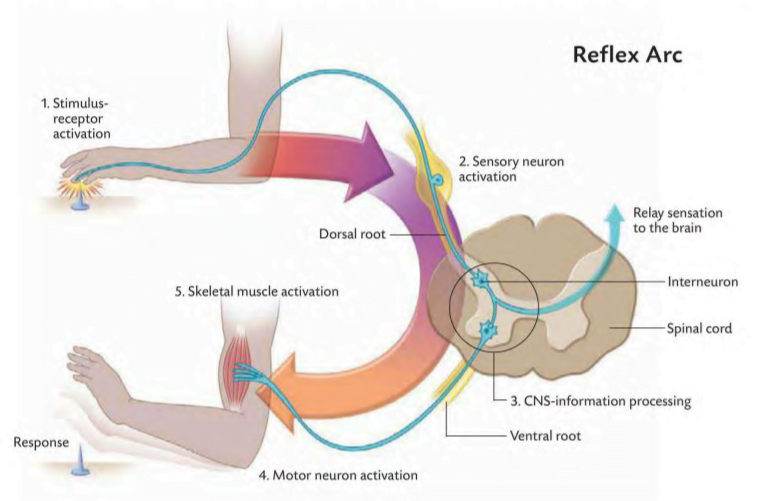MESSENGERS – RELAYING INFORMATION TO & FROM THE BRAIN [ THE NERVOUS SYSTEM ]
THE COMPLEXITY of the brain and how it collects data and reacts to them lies in the very integration of its many neurons. Neural integration not only results in the interplay of sensations associated with motor activity but also influences the ways humans remember, think, and create. In the central nervous system, neurons form organizations called neuronal pools that process information brought in from either the peripheral nervous system or the neighboring neuronal pools.
SERIAL PROCESSING
Sometimes, one neuron excites only one other neuron, which excites only one other neuron, and so on, like a single row of toppling dominoes. The result of such “serial processing” is a clear-cut response. You can see a good example when the doctor taps your knee with his hammer, and the reflex action makes you jerk your leg. The links in the chain, called a reflex arc, must include a receptor responding to an external stimulus, a sensory neuron to carry the information to the central nervous system, an integration center in the spinal cord, a motor neuron to carry a return signal, and a muscle or gland to react.
Indigestion can hurt your chest. Packed spinal nerves sometimes confuse paths of pain signals.
PARALLEL PROCESSING
Other times, sensory information branches into many pathways. A single neuron may excite several others, like one domino setting a dozen rows in motion. This causes “parallel processing” of information as circuits diverge and converge in the central nervous system. Each neural circuit delivers different information at the same time.
ITCH & SCRATCH
NERVE ENDINGS sensitive to the sensation of itching proved hard to find. Not until 1997 were these receptors isolated in the skin; their extreme thinness helped hide them from prying eyes. The sensation the itch and its response the scratch-still remain mysterious for neuroscientists. In 2008, findings showed that there are different kinds of itches, which activate different neural pathways. The relief of a scratch depends on the type of itch. Insight into how an itch works can help neuroscientists understand how to control it-and other sensations, like pain.
For example, seeing a kitten may remind you of the cat you raised as a child; the scar on your hand that you got when you bathed your kitty the first (and possibly last) time; the subtle hints your daughter has made in the last few days that she would like to own a pet; or the pleasant purring a happy kitten makes when you gently stroke it. Or all of these associations may appear in quick succession. Each response to the stimulus-“kitten”-is ullique, not only among every human, but also from instance to instance in a single brain, thanks to the addition of new experiences and environments.
Parallel processing creates complexity several orders of magnitude above serial processing. For instance, when you see a driver’s license, you quickly recognize it as such because your brain’s neuronal circuits are assimilating vanous inputs from it at the same time. The shape of the license, its colors, the photograph of a face on one side, the identifying information about the card’s owner, the state’s name and artwork, and perhaps the fact that you saw it being removed from a wallet-all pass along through a variety of parallel circuits to allow a bartender to quickly say, “You’re underage,” or a traffic officer to remark, “You need to renew that next month.” In contrast, it takes a much longer time for a computer using serial processing to analyze the object and declare what it is. Its circuits are not as efficient as the brain’s systems.


